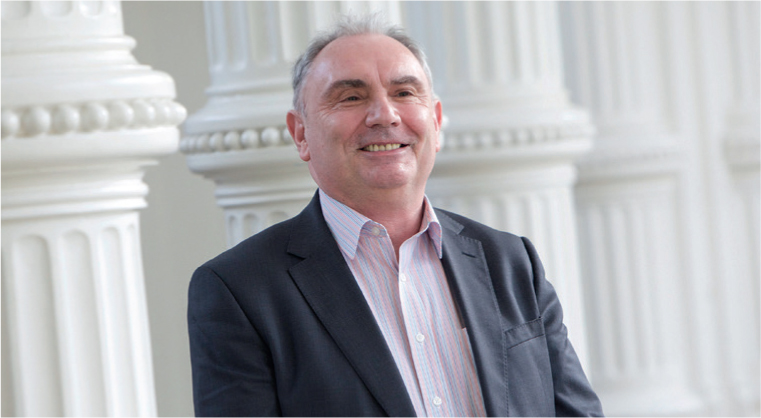
The topic of patient safety is a vast one encompassing many issues. This is not surprising, given the complex nature of health care and the various contexts surrounding it. Publications in the patient safety field reflect this diverse nature. We can see broad policy reports on patient safety strategy at national and global levels and more focused ones on specific clinical areas and issues.
Not all will be applicable, and a detailed appraisal is needed. We then need to translate them into effective practice. To drill down from the general to the specific, from translating the theory into effective practice in the ward or clinic. This column will look at patient safety reports spanning several areas and illustrating the diverse nature of patient safety study and its complexity.
NHS Staff Survey 2024
There is a need for all organisations to take time to reflect on critical matters. Staff surveys are important to all organisations, there is a need to ‘take the temperature’ of the organisation, to conduct a baseline check on its core operating component, its staff. A discontented staff points to an organisation in decline. Workforce survey findings can also show how the organisation can better meet the needs of the customers that it serves, and identify gaps in service provision.
The NHS Staff Survey has been conducted every year since 2003 and is one of the largest workforce surveys in the world. The survey asks NHS staff about their experiences of working for the NHS. For the 2024 survey, over 1.5 million NHS employees in England were invited to take part and 774 828 staff responded (NHS Survey Coordination Centre, 2025). The largest group, in terms of occupation, who took part were registered nurses and midwives at 220 501.
The survey has several response headings, which include:
- We are compassionate and inclusive
- We each have a voice that counts
- We are safe and healthy
- Patient Safety Questions.
The survey covers fundamental issues relating to the workforce and many relate to patient safety. Under the heading ‘We are compassionate and inclusive’, findings include that 70.92% agree that their organisation acts on concerns raised by patients/services users (Q25b), while under the heading ‘We each have a voice that counts’ findings include that 71.53% would feel secure raising concerns about unsafe clinical practice (Q20a) and 56.83% were confident that their organisation would address their concern (Q20b).
At the end of the survey there is a section dealing specifically with patient safety, reporting of errors, near misses and incidents. Findings include:
- 33.60% of staff have seen errors, near misses, or incidents that could have hurt staff and/or patients/service users in the last month (Q18).
- 59.71% of staff said their organisation treats staff who are involved in an error, near miss or incident fairly (Q19a)
- 68.21% of staff said that when errors, near misses or incidents are reported, their organisation takes action to ensure that they do not happen again (Q19c).
All these findings are concerning and show that a proper and effective NHS patient safety culture is some way off. The figures in the survey speak volumes and starkly show the need to improve matters in the areas addressed. The charity, Patient Safety Learning (2025), concludes in a blog on the survey that there is no sign of change in NHS patient safety culture:
‘The 2024 staff survey results show no significant change from recent years in responses to questions on reporting incidents, clinical safety and speaking up about patient safety issues. While the survey only provides an annual snapshot of what it is like to work in the NHS, its findings are reinforced by evidence elsewhere.’
I would agree with the views expressed by Patient Safety Learning. More needs to happen to make an NHS patient safety culture a reality, rather than seemingly an ambition:
‘We need to move beyond rhetoric and into practical action.’
NHS Resolution: claims relating to hazardous substances
NHS Resolution has a ‘Did you know?’ series, which looks at litigation trends and costs of claims within certain clinical areas, along with the patient safety implications. These publications are excellent, written in a straightforward manner with a good amount of detail and focus. The costs of claims in the specific areas is useful to help to further conceptualise the issues.
A recently published report in the series is on ‘Learning from staff claims relating to exposure of substances hazardous to health’ (NHS Resolution, 2025). This considers claims from staff who have been exposed to such substances in the course of their daily work, resulting in health problems. Hazardous substances can include dusts, gases or fumes that are inhaled, and can also be present in liquids, gels or powders making contact with the skin:
‘The effect can be immediate, such as dizziness, chemical burns and stinging eyes, or can take many years to develop such as lung disease and dermatitis. Many of the long-term or chronic effects are incurable.’
NHS Resolution received 371 claims for harm caused by exposure to substances hazardous to health from incidents occurring between 1 April 2013 and 31 March 2023. The total cost for closed claims was £5 989 451; of these claims, there were 165 that were settled with damages paid and the total cost of damages paid was £2 471 880. A further 58 of the 371 claims are still open.
NHS Resolution says that, in most claims, multiple contributory factors led to harm with often more than one safety breach:
‘These include organisational failure to prevent exposure, failure to risk assess, failure to monitor exposure, and failure to provide adequate PPE and training.’
The report also provides information on the number of claims related to named substances hazardous to health. Also, several case stories are provided, which include one on nursing (Case story 2 in the report).
Recommendations are made on what can be done to avoid problems in this area. These include becoming familiar with the hierarchy of controls, understanding the risks involved in your role such as mixing chemicals, not using ill-fitting PPE and so on.
Global patient safety
Patient safety is a worldwide problem, and we can all learn from the experiences of other countries. Although healthcare delivery systems of countries will differ, some of patient safety solutions developed by other countries can often be shared and be viewed as generic.
The World Health Organization (WHO) (2025) has announced the topic for this year's World Patient Safety Day on 17 September: ‘Safe care for every newborn and every child’. The objectives include raising global awareness of safety risks in paediatric and newborn care in all health settings, mobilising governments and other stakeholders to implement sustainable strategies for safe care for newborns and children as part of broader patient safety and quality initiatives and so on.
Judging from the success of previous past World Patient Safety days, many countries will demonstrate excellent training and education events in recognition of the day, along with other events. A unique and valuable focus on a concerning global and national patient safety issue is provided by this WHO initiative.
Economics of diagnostic safety
Staying with the global patient safety theme, the Organisation for Economic Co-operation and Development (OECD) has produced a report on ‘The economics of diagnostic safety’ (Slawomirski et al, 2025). If health professionals don't get ‘diagnosis’ right in the first place, then everything else falls apart with a patient's treatment and litigation could well follow. A patient's health problem or condition must be properly identified. Slawomirski et al (2025) take a deep dive into this issue in a report spanning 101 pages. The report is detailed, well researched and offers well-reasoned recommendations. Chapters cover understanding diagnosis and diagnostic safety, case studies illustrating diagnostic error, the burden of diagnostic error, and addressing the causes of diagnostic error.
The OECD report says that depending on the healthcare setting, up to 15% of diagnoses are estimated to represent a diagnostic error, and that most people will experience at least one diagnostic error in their lifetime. It is estimated that 80% of all harm caused by delayed diagnosis or misdiagnosis may be preventable. In terms of the economics:
‘Diagnostic errors negatively impact patient outcomes and increase the use of healthcare services, with associated increased costs. An estimated 2.6 million diagnostic errors occur in the United States each year, resulting in approximately 371 000 deaths and 424 000 permanent disabilities due to misdiagnosis. This report estimates that the direct consequences of diagnostic error on healthcare budgets account for 17.5% of total healthcare expenditure.’
The conclusion gives several steps that policymakers can do to improve diagnostic safety, such as (Slawomirski et al 2025:74):
- Clinical directors should foster changes in medical work culture and the clinical environment for a peer feedback and multidisciplinary approach to patient diagnosis and review
- Patient perspectives and preferences should be taken into account when making and reviewing a diagnosis
- National patient safety agencies should routinely collect, report and publish quality assurance indicators for error and safety for diagnosis of common conditions such as cancer screening, mental health disorders and sepsis.
Overall, this is a valuable report that makes an excellent addition to the patient safety field of literature.
Conclusion
We can see from the reports discussed in this column the wide and diverse nature of the patient safety subject area and the publications relating to it. The NHS Staff Survey reveals critical information on how the workforce for one of the biggest employers in the world feel about key issues, some of which carry important patient safety implications. From the survey we can take the message that much more needed to be done to develop a proper NHS patient safety culture.
NHS Resolution (2025), in discussing hazardous substances, crystallises well the legal and patient safety issues involved in this area. The litigation cost identified is an important and unique feature of the report. Patient safety does also maintain a global perspective and it is a valuable exercise to look at problems and issues comparatively for fresh perspectives – to see what other countries are doing and whether it might work in the NHS across the UK.


